|
Child and Adult Care Food Program (CACFP)
2025 - 01
|
|
Alaska Department of Education and Early Development
Division of Finance and Support Services
Child Nutrition Programs
P.O. Box 110500
Juneau, AK 99811 |
|
Subscription Management
Are you receiving this message but don't want to receive it? Is there someone in your organization that should receive this but isn't? Manage your subscription on GovDelivery.
|
|
USDA Policy, Information, and Implementation Memos |
|
Sponsoring organizations and institutions are required by regulation to keep Bulletins, Instructions, and USDA Policy Memorandums for reference and to apply immediately the appropriate instruction to agency programs. The latest policy memos are found on the USDA FNS policy page. Call Child Nutrition Programs if you need further clarification.
|
|
Additional Topics
Please be aware of our annual renewal/application deadlines. Thank you for all your work on getting your applications submitted in time.
CACFP Program Year begins October 2024 and ends September 2025.
 Reminder about your Non-Profit Food Service (NPFS) Report:
- Please note that you must submit your September claim first so that you’ll know the total program reimbursement and total expenses. If you are done with your September claims, you are welcome to send the NPFS to us.
- The form can be downloaded from the Checklist tab on CNP Web.
- If this is your first time completing the NPFS Report, you are welcome to reach out to cnp.cacfp@alaska.gov
Fire Inspections
Unlicensed sites operating CACFP are required to submit their most recent fire inspection to us, preferably one that was conducted in the last two years. However, we recognize that sites located in rural areas may not have the same opportunity that other urban sites have to receive regular fire inspections.
If you have a site that has not received an inspection, please do the following:
1. Request for an inspection from your fire authority. The Division of Fire and Life Safety has statewide jurisdiction for fire code enforcement and plan review authority, except in communities which have received deferrals.
2. Complete a Self-Inspection Form, which you can use for your records and requirements. The appropriate form can be downloaded from the Life Safety Inspection Bureau page. You are not required to send this to the fire marshal for review.
When the Division of Fire and Life Safety travels to your community, they will have a list of buildings that they will inspect. If your building is inspected, the building representative will be given a copy of the inspection which they may share with you.
Being in a deferred jurisdiction doesn't mean you are exempt from this requirement; it just means you will need to contact a different fire agency for your local procedures. For a list of deferred jurisdictions, please visit the Life Safety Inspection Bureau page for contact information.
Farm to Early Care and Education
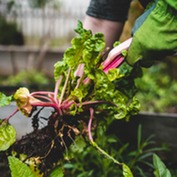
October is National Farm to School Month, but this doesn't mean that it’s just for schools. It's a time to celebrate children and local food in many different settings, including in the CACFP. This year's theme is From Soil to Sea: Nourishing People and Planet.
Farm to School/Early Child Care and Education (ECE) provides all kids access to nutritious, high-quality, local food so they are ready to learn and grow. These activities enhance classroom education through hands-on learning related to food, health, agriculture and nutrition. Farm to School/ECE benefits everyone from students, teachers and administrators to parents and farmers, providing opportunities to build family and community engagement. Buying from local producers creates new jobs and strengthens the local economy.
The National Farm to School Network (NFSN) have a Celebration Toolkit to help you participate in Farm to ECE activities. The National CACFP Sponsors Association (NCA) also has some great resources.
You can also check out the October Harvest of the Month posters below.
|
New Area Eligibility for CACFP At-Risk Afterschool Component
At the beginning of the fiscal year, FNS releases a special tabulation of data provided by the United States Census Bureau for CACFP and SFSP that can be used to establish area eligibility. The FNS mapping tools have been updated to reflect the October 1, 2025 changes.
To explore the area eligibility map, click this link. The data set is also available for download on FNS’ open data site. To learn more about using census data for establishing area eligibility for CACFP and SFSP, please review our policy memorandum from 2017.
|
|
Webinars & Conferences
Registration Now Open for the 2025 National Child Nutrition Conference
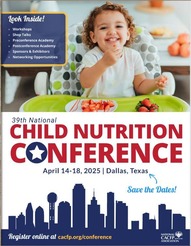
The 39th National Child Nutrition Conference, provided by the National CACFP Association (NCA), is now open for registration.
The National Child Nutrition Conference is an annual event that brings together professionals from child care centers, home providers, sponsoring organizations, school districts, afterschool programs, Head Start programs, Food Banks, tribal nations and State Agencies.
The 2025 National Child Nutrition Conference will be held April 14-28, 2025, in Dallas, Texas.
|
Festive Flavors: A Low Sugar Holiday
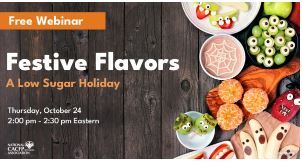
Free webinar provided by the National CACFP Sponsors Association (NCA).
It’s party season and we’re gearing up CACFP-style! Reduce the sweets and turn every celebration into a healthy feast that kids will love. Discover creative and nutritious ideas for holiday and special occasion dishes that are #CACFPCreditable.
This webinar is on Oct 24, Thursday, 10:00 am - 12:00 noon Alaska.
|
Menu Planning in the CACFP

Brought to you by the National CACFP Sponsors Association, the Menu Planning Boot Camp will be available via Zoom November 20-21, 2024.
Get ready to become a menu planning expert with our Menu Planning Boot Camp! In just two days of training, you'll learn to understand CACFP menu requirements, how to select budget-friendly and accessible foods, and gain valuable insights from kitchen professionals.
Discover tips and techniques to unlock your inner chef and elevate your meal planning skills. Provide nutritious and delicious meals for those in your care with newfound confidence and expertise.
Early registration rates for this boot camp are $149 for NCA members and $199 for non-members.
|
|
|
Recipes & Resources

Centers for Disease Control and Prevention Resources
The Centers for Disease Control and Prevention has provided a list of resources for Early Care and Education providers:
- Improving nutrition, physical activity, and breastfeeding in early care and education (ECE) settings. ECE providers are on the frontline of public health and are valuable partners in safeguarding the health and well-being of young children and families. CDC offers many resources, from free training to educational materials to share with families, through the Early Care and Education Portal.
- Starting good nutrition practices early can empower children to develop healthy dietary patterns that will benefit them throughout their lives. CDC’s Infant and Toddler Nutrition website is another resource that public health professionals, health care providers, and the public can access for information and practical strategies on feeding healthy foods and drinks to infants and toddlers.
In addition to the many resources related to young children that I’ve already mentioned, CDC publishes timely, relevant feature articles. Here are just a few:
- Breastfeeding Benefits Both Baby and Mom
- Good Nutrition Starts Early
- Mealtime Routines and Tips
- Tips to Help Your Picky Eater
- Achieving continuity of care for mothers who breastfeed. Breastfeeding has many health benefits for infants, children, and mothers. Communities, workplaces, childcare agencies, hospitals, health care providers, lactation support providers, and related social services can make breastfeeding easier. CDC provides information, resources, and data to help with breastfeeding efforts. They recently released new breastfeeding rates that can be used to help inform decisions for supporting breastfeeding at state and national levels.
Your role in promoting the health of young children is important and valued, and CDC wants to help you to help others. A healthy start for young children can set them up for good health throughout their lives.
|
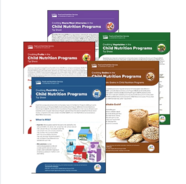
Crediting Tip Sheets
The Crediting in the Child Nutrition Programs Tip Sheet series has been revised to reflect the changes with the Final Rule, Child Nutrition Programs: Meal Patterns Consistent With the 2020-2025 Dietary Guidelines for Americans. The Crediting in the Child Nutrition Programs tip sheet series consists of seven tip sheets covering the five meal components: fluid milk, fruits, vegetables, meats/meat alternates, and grains (three separate tip sheets). The revised versions introduce the menu-planning flexibilities beginning July 1, 2024 and changes that will implemented in the coming school years in a quick-reference format.
|
Harvest of the Month
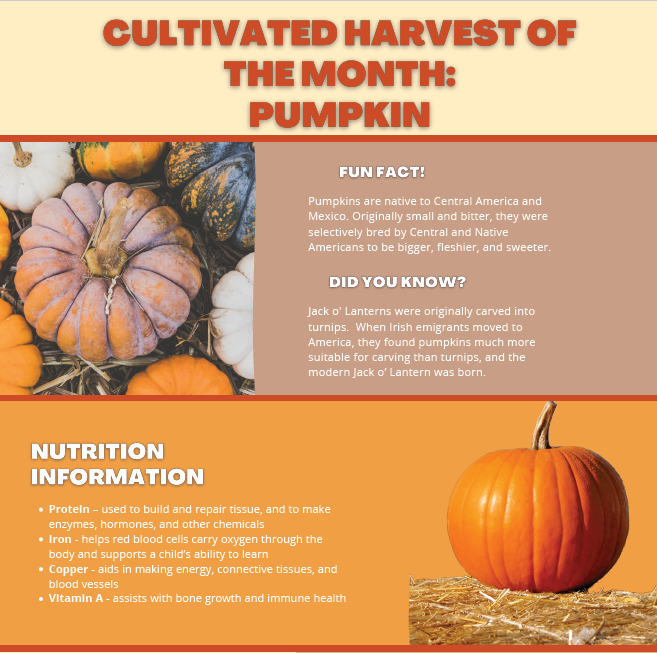 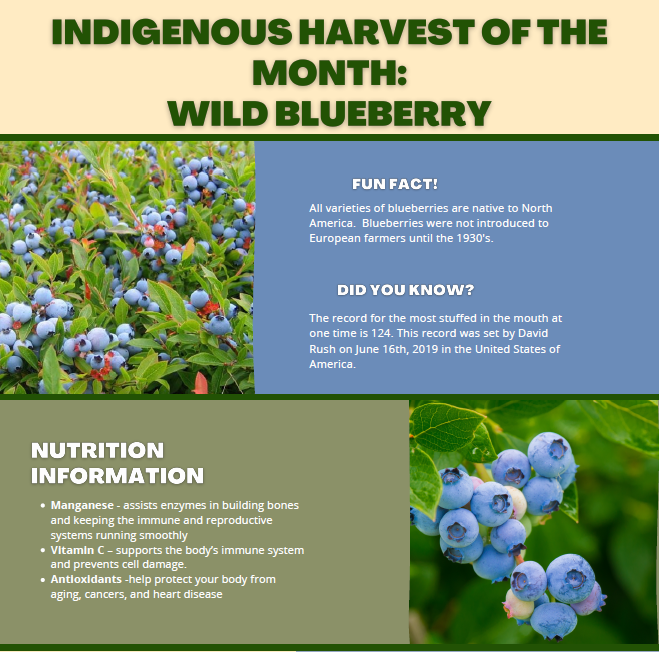 To find out more about Harvest of the Month resources, please contact Waverli Stowe at waverli.stowe@alaska.gov.
Team Nutrition Resources
|
|
Contact Us
Child and Adult Care Food Program
School Meals
Summer Meals
Food Distribution Program
Fresh Fruit & Vegetable Program
|
Farm to School
The Emergency Food Assistance Program
Child Nutrition Grants
Child Nutrition Financial Management
|
|
|
This newsletter contains hyperlinks to information created and maintained by other public and private organizations. These links are provided for the reader’s convenience. DEED does not control or guarantee the accuracy, relevance, timeliness, or completeness of this outside information. Furthermore, the inclusion of links is not intended to reflect their importance, nor is it intended to endorse any views expressed, or products or services offered, on these sites, or the organizations sponsoring the sites.
USDA Nondiscrimination Statement (English)
In accordance with federal civil rights law and U.S. Department of Agriculture (USDA) civil rights regulations and policies, this institution is prohibited from discriminating on the basis of race, color, national origin, sex (including gender identity and sexual orientation), disability, age, or reprisal or retaliation for prior civil rights activity.
Program information may be made available in languages other than English. Persons with disabilities who require alternative means of communication to obtain program information (e.g., Braille, large print, audiotape, American Sign Language), should contact the responsible state or local agency that administers the program or USDA’s TARGET Center at (202) 720-2600 (voice and TTY) or contact USDA through the Federal Relay Service at (800) 877-8339.
To file a program discrimination complaint, a Complainant should complete a Form AD-3027, USDA Program Discrimination Complaint Form which can be obtained online at: https://www.usda.gov/sites/default/files/documents/USDA-OASCR%20P-Complaint-Form-0508-0002-508-11-28-17Fax2Mail.pdf, from any USDA office, by calling (866) 632-9992, or by writing a letter addressed to USDA. The letter must contain the complainant’s name, address, telephone number, and a written description of the alleged discriminatory action in sufficient detail to inform the Assistant Secretary for Civil Rights (ASCR) about the nature and date of an alleged civil rights violation. The completed AD-3027 form or letter must be submitted to USDA by:
-
mail: U.S. Department of Agriculture Office of the Assistant Secretary for Civil Rights 1400 Independence Avenue, SW Washington, D.C. 20250-9410; or
-
fax: (833) 256-1665 or (202) 690-7442; or
-
email: program.intake@usda.gov
This institution is an equal opportunity provider.
|
|
|
|
|